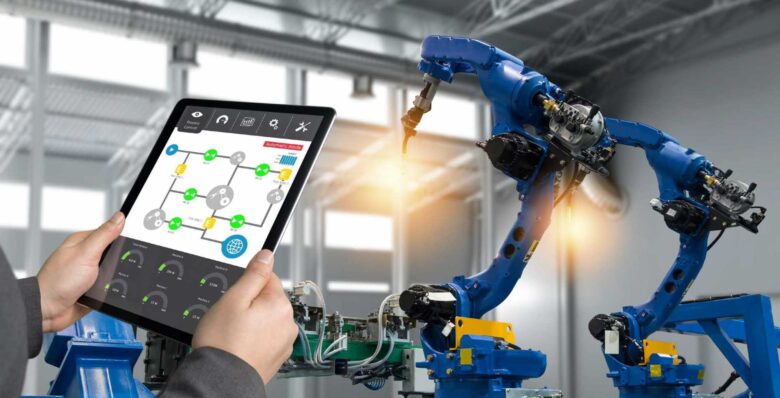If you’re a manufacturer, then you know that the industrial internet of things (IIoT) is essential to your success. By connecting your machines and devices to the internet, you can collect and analyze data to optimize your processes and improve your bottom line. In this guide, we will discuss IoT for manufacturing, how to connect your devices, monitor your operations, and optimize your manufacturing processes. Let’s get started!
Industrial IoT (IIoT) is the next big thing for manufacturers. By manufacturing IoT devices and manufacturing IoT internet of things, you can collect and analyze data to optimize your processes and improve your bottom line. In this blog post, we will also discuss IoT solutions for manufacturing and manufacturing industrial internet of things companies.
What are Industrial IoT and its benefits for manufacturers?
The internet of things, or IoT, refers to the interconnectedness of physical devices and sensors that collect and share data. The industrial internet of things, or IIoT, is the application of this technology to manufacturing the internet of things. Despite the risks and challenges, there are several key benefits of implementing an IIoT system. These benefits include:

Source: community.nasscom.in
-Improved efficiency: IIoT can help you to identify bottlenecks and optimize your manufacturing process. ability to collect and analyze data. By understanding how your machines are operating, you can identify issues and optimize your processes.
-Reduced downtime: By monitoring your process, you can fix problems before they occur.
-Improved quality: By collecting data about your process, you can identify areas that need improvement.
-Increased flexibility: IIoT can help you to adapt to changing market conditions. By connecting your machines to the internet, you can quickly make changes to your processes without having to physically alter your equipment. Thus, there are several key benefits of implementing an IIoT system.
– IIoT can help improve safety in the workplace by providing real-time monitoring of dangerous situations. It can also enable predictive maintenance so that you can fix problems before they happen.
Despite the risks and challenges, the benefits of IIoT make it a worthwhile investment for many manufacturers.
How do connect devices and sensors?
There are two main ways to connect devices and sensors to the internet: wired and wireless.
Wired connections are typically faster and more reliable than wireless. However, they can be more expensive and difficult to install.
Wireless connections are typically less expensive and easier to install. However, they can be less reliable and slower than wired. The best way to connect your devices and sensors will depend on your specific needs and circumstances and you should consult with an expert to determine the best solution for your situation.
Components of the IIoT system

Source: datamation.com
In order to implement an IIoT system, you will need the following components:
-Sensors and devices: These are the physical components that collect data.
-Gateway: This is a device that connects sensors and devices to the network.
-Network: This is the infrastructure that allows data to be transmitted between devices.
-Data platform: This is a software system that stores and analyzes data.
-Applications: These are the software programs that use data to provide insights or take actions.
Thus, you will need sensors and devices, a gateway, a network, a data platform, and applications in order to implement an IIoT system. In the next section, we will discuss how to select the right components for your system.
Application of IIoT in manufacturing
IIoT can be applied in many different ways in manufacturing. Some common applications include:
-Asset tracking: This involves tracking the location and status of assets such as machines, tools, and products.
-Process monitoring: This involves collecting data about the manufacturing process and using it to improve efficiency.
-Predictive maintenance: This involves using data to identify potential problems and fix them before they occur.

Source: themanufacturer.com
-Quality control: This involves using data to ensure that products meet quality standards.
–Inventory management: This involves tracking the level of inventory and reordering when necessary.
thus, IIoT can be used in many different ways in manufacturing. In the next section, we will discuss how to implement an IIoT system in your facility.
Implementing an IIoT system
When implementing an IIoT system, there are three main considerations:
-Connectivity: You need to ensure that your devices and sensors are connected to the network.
-Security: You need to protect your data from unauthorized access.
-Scalability: You need to ensure that your system can handle increased demand.
Thus, when implementing an IIoT system, you need to consider connectivity, security, and scalability.
Risks and Challenges
There are several risks and challenges associated with IIoT. Some of the most common include:
-Data security: Because data is transmitted over the internet, it is vulnerable to hacking and cyberattacks.
-Network reliability: If the network goes down, data will not be able to be transmitted.
-Device compatibility: Not all devices are compatible with IIoT.

Source: quayconsulting.com.au
-Cost: Implementing an IIoT system can be expensive.
We have clearly stated the risks and challenges associated with IIoT. However, these should not deter you from implementing an IIoT system. The benefits of IIoT often outweigh the risks.
Conclusion
In conclusion, IIoT is a technology that can be used to connect, monitor, and optimize manufacturing processes. When selecting components for your system, you need to consider connectivity, security, and scalability. There are several risks and challenges associated with IIoT, but the benefits make it a worthwhile investment for many manufacturers.



![How to Create Partitions in Windows 10/11? -[Professional Guide] How to Create Partitions in Windows 10/11? -[Professional Guide]](https://norsecorp.net/wp-content/uploads/2022/11/Create-Partitions-in-Windows-10-11-211x150.jpg)
